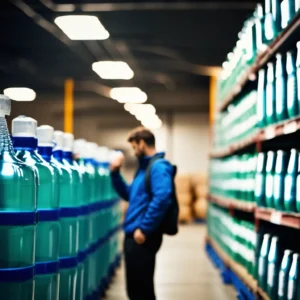Ensuring access to safe drinking water is crucial in emergencies, where clean water may become scarce.
Natural disasters, power outages, and contaminated water supplies are just a few scenarios that heighten the need for reliable water storage solutions.
This guide aims to equip you with the knowledge to secure your water supply effectively, ensuring that you and your loved ones remain hydrated and healthy during unforeseen circumstances.

Understanding Water Storage Needs
Properly assessing your water needs is the first step in emergency preparedness. On average, a person requires about one gallon of water per day for drinking and sanitation. For a family of four, this equates to 12 gallons for a three-day emergency period. Consider additional water for pets and essential cooking, as this can influence your overall storage requirements significantly.
Types of Emergency Water Storage
Short-Term Storage Solutions
For immediate needs, bottled water is a convenient and reliable option. Having a supply of water purification tablets on hand ensures that you can treat questionable water sources quickly and effectively, securing safe potability in a pinch.
Long-Term Storage Solutions
For extended emergencies, larger storage options like water barrels and tanks provide the needed capacity. Water storage bags and DIY containers can be customized to fit your available space and budget, offering adaptability in diverse circumstances.
Safe Water Storage Techniques
Choosing the right materials for your containers is crucial to maintaining water quality. Look for containers made from food-grade plastics and avoid those that can leach chemicals, such as BPA. Ensure that containers are tightly sealed and clearly labeled with the storage date. Store them in a cool, dark place to prevent degradation from light and heat, which can compromise the water’s safety.
Water Purification and Treatment
Using various purification methods ensures that your water remains safe to consume. Boiling is a simple technique that effectively kills pathogens, although it requires a heat source. Chemical treatments like iodine or chlorine dioxide are compact and efficient. Filters, especially those designed for emergency use, can remove contaminants as water is drawn for use.

Maintaining and Rotating Stored Water
Regular maintenance of your water supply is vital to ensure its safety when needed. Rotate stored water every six months to prevent staleness and contamination. Set up a system of reminders for these rotations, and routinely check for signs of spoilage like bad odors or discoloration.
Special Considerations for Different Types of Water
Rainwater can be a valuable source if properly collected and treated. Special care is needed for hard or mineral-rich water, which may require additional filtration. When storing tap or natural source water, confirm local advisories on its quality and safety.
Building a Comprehensive Emergency Water Kit
Create a checklist of necessary supplies to complement your stored water. Compact filtration systems and purification tablets can fit into small spaces, making them ideal for homes with limited storage. Integrating water needs into your broader emergency plans ensures comprehensive preparedness.
Legal and Safety Considerations
Familiarize yourself with local regulations regarding water storage to ensure compliance. Some areas may have specific requirements or restrictions that affect your ability to store large quantities of water. Additionally, acknowledge safety warnings to mitigate potential hazards associated with improper storage.
Conclusion
Effective water storage is a cornerstone of emergency preparedness. Begin assembling your supplies today, ensuring that you are ready for whatever challenges may arise. For further insights, consult resources from authoritative sources like the Centers for Disease Control and Prevention and the Federal Emergency Management Agency, as they offer detailed guidelines and recommendations for safe water storage practices. As the Federal Emergency Management Agency advises, “Water is an essential part of emergency preparedness plans; make it a priority.” Stay informed and prepared with the right resources to safeguard your family’s health and wellbeing.